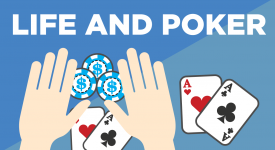Texas Holdem Poker Manila

Philippine poker started in early 2006 with one poker room located at PAGCOR’s Airport Casino.In the beginning, it was the only casino offering Texas Hold’em Poker. But after The Metro Card Club, the very first mortar & brick poker room in the country opened, numerous rooms followed s.
Texas Holdem Poker Masque Publishing
- The most popular of all poker variations was hailed in Robstown, Texas in the 1900s. Texas Holdem Poker’s popularity reached.
- City of Dreams Manila: Poker room - See 520 traveler reviews, 306 candid photos, and great deals for Paranaque, Philippines, at Tripadvisor.
- The standard 52-card pack is stripped of all cards below 7 to make a deck of 32 cards (7,8,9,10, J,Q,K,A) Object of the Game. The goal of each player is to win the pot, which contains all the bets that the players have made in any one deal.
Manila Poker, or Seven-Up Poker, is a Texas Hold’Em Poker variation, which is very popular in Australian casinos. The game is played with a stripped deck where all cards below the rank of seven are removed. The remaining deck has 32 cards.


Rules of Manila


After the initial blind bets, each player is dealt two cards face down. One face up community card is also dealt. The player to the left of the player that posted the big blind begins the first round of betting.
A second community card is then dealt. This is followed by the second round of betting, starting with the player to the dealer’s left. A third, forth, and fifth community card are dealt, each card is followed by another round of betting. This is followed by the showdown.
Unlike in Texas Hold’Em, in Manila Poker each player must make the best possible five-card poker hand with both of his hole cards and exactly three of the five community cards.
Texas Holdem Poker Manila Online
Because of the stripped Manila deck, a flush beats a full house. In addition, an Ace may not be played low for a straight (A-7-8-9-10 is not a straight). A common variation for Manila Poker involves dealing three cards to each poker player, one of which can either be discarded at some point (like Pineapple Poker), or else held to the end, but maintaining the requirement that each poker player play exactly two of his own cards with exactly three of the board community cards. The three-card variant is sometimes played with 6s being restored to the deck, making it 36 cards.